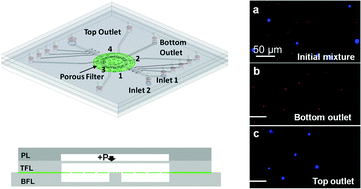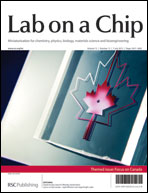High throughput multilayer microfluidic particle separation platform using embedded thermoplastic-based micropumping†
Abstract
We present an integrated thermoplastic elastomer (TPE) based multilayer microfluidic device with an embedded peristaltic micropump and through-holes membrane for high throughput particle sorting and separation. Fluidic and pneumatic layers of the device were fabricated using hot-embossing

- This article is part of the themed collection: Focus on Canada

 Please wait while we load your content...
Please wait while we load your content...